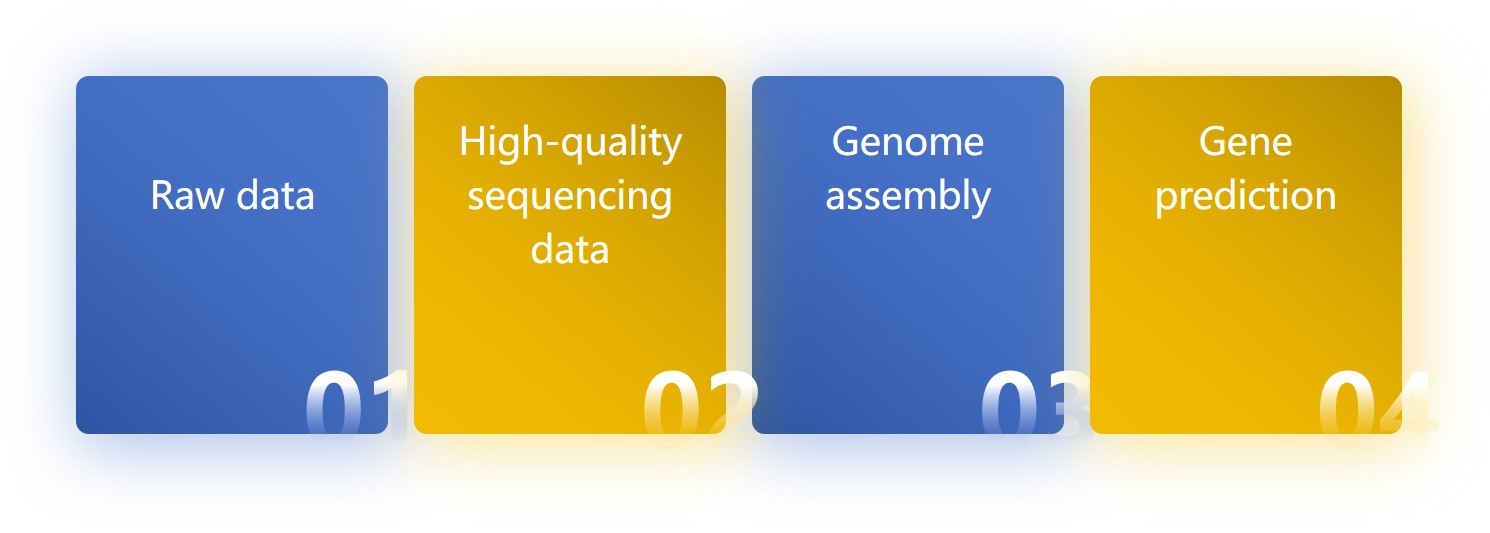Organelle Genome De Novo Sequencing in Tissue Culture Plants
De Novo sequencing is the first time that the genome of a species is sequenced, and the sequences obtained from the sequencing are assembled using bioinformatics analysis methods to obtain a genome sequence map of the species. The organelle genome de novo sequencing (mitochondria and chloroplasts) service provided by Lifeasible helps you obtain high-quality organelle genome information through high-throughput sequencing technology.
What is the Organelle Genome?
Eukaryotic organelle genomes mainly include all DNA molecules contained in mitochondria and plastids (including chloroplasts, white bodies, etc.), and are the main carriers of cytoplasmic inheritance. Organelle genomes are characterized by high conservation, low mutation rates, and matrilineal inheritance, which can provide valuable information for phylogeny, species identification, and various studies on biodiversity and population genetic conservation.

Within a single cell of plants, animals, and fungi, there are often multiple (or even thousands of) copies of organellar genomic units, which makes it possible to obtain complete organellar genomes using low-coverage whole-genome sequencing data assembly. With the development of DNA high-throughput sequencing technology, the cost of sequencing has dropped dramatically, and low-coverage whole-genome sequencing data can be generated on a large scale, how to quickly and accurately assemble organellar genomes is crucial for the study of subsequent biological problems.
What We Offer
We used second + third-generation hybrid data assembly to improve contig N50 and scaffold N50 metrics to improve genome assembly quality.
Content of analysis
- Genomic component analysis
- SSR analysis
- Other repetitive column analysis
- Codon preference
- Gene function annotation
- Genome circle mapping
|
- IR boundary contraction and expansion
- SNP, Indel detection
- Covariance analysis
- Phylogenetic analysis
|
- Adaptive evolution analysis
- Fragmentation exchange analysis
- Raw data upload
- Genome sequence upload
|
Optional analysis
- Gene family analysis
- Chromosome covariance analysis
- Gene family expansion and contraction analysis
- Genome-wide replication event analysis
- Evolutionary tree reconstruction based on genome-wide single-copy genes
- Divergence time estimation
- Shared and unique gene family analysis
- LTR insertion time
- Positive selection analysis
Technology route

Sample Requirements
| Sample type |
Sample concentration |
Total sample volume |
Sequencing data volume |
| Second generation |
Third generation |
| DNA |
≥50 ng/μL |
≥10 μg |
≥6 G |
≥500 Mb |
| Plant tissue |
- |
≥5 g |
| The specific sequencing depth also needs to refer to information such as the purpose of the study, genome complexity, and sequencing technology methods. Three-generation sequencing requires the enrichment of organelle DNA. |
Advantages
- Help customers quickly obtain raw data, assemble annotation results, and upload NCBI accession numbers.
- High sequencing depth to enrich more genomic information of organelles and avoid genomic contamination.
- Rich experience in organelle genome analysis and manual proofreading of gene annotation results.
- One-on-one after-sales service to provide professional services for customers' publications.
FAQs
What is the difference between a genomic frame map and a fine map?
|
The framework map can cover 90% of the autosomal region of the genome and 95% of the gene region, Contig N5 to 5 kb, Scaffold N50 up to 20 kb, and the single base error rate is less than 1 in 100,000. The fine map can cover 95% of the autosomal region of the genome, 98% of the gene region, Contig N5 to 20 kb, Scaffold N50 up to 300 kb, and the single base error rate is under one in 100,000. |
Why do we need to construct different types of libraries?
|
Because the size and complexity of different plant genes and the presence of repetitive regions vary greatly. Therefore, it is necessary to prepare sequencing libraries with different gradients for double-end sequencing, which makes it possible to skip the large range of repetitive regions in splicing. This avoids misspellings caused by repetitive sequences in the genome and improves the quality of splicing. Meanwhile, the combination of BAC or Fosmid libraries and multiple sequencing platforms ensures the accuracy of sequencing and genome integrity. |
Please feel free to contact us for more information about the organelle genome de novo sequencing in tissue culture plants.
You want to sign a confidentiality agreement.
You have a specific plant species for your experimental needs.
You have a reliable and relevant cooperation project to discuss.
You are very interested in our project or have any questions.
You need an updated and detailed quotation.
For research or industrial use.




